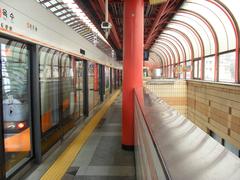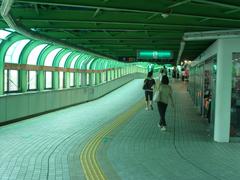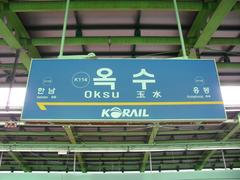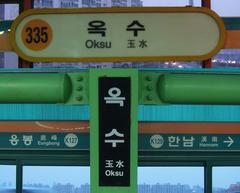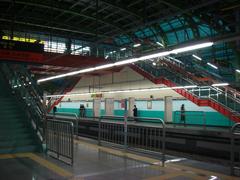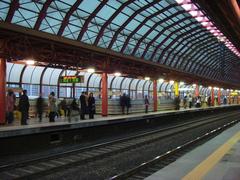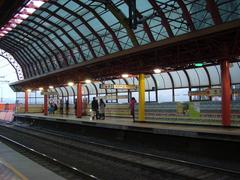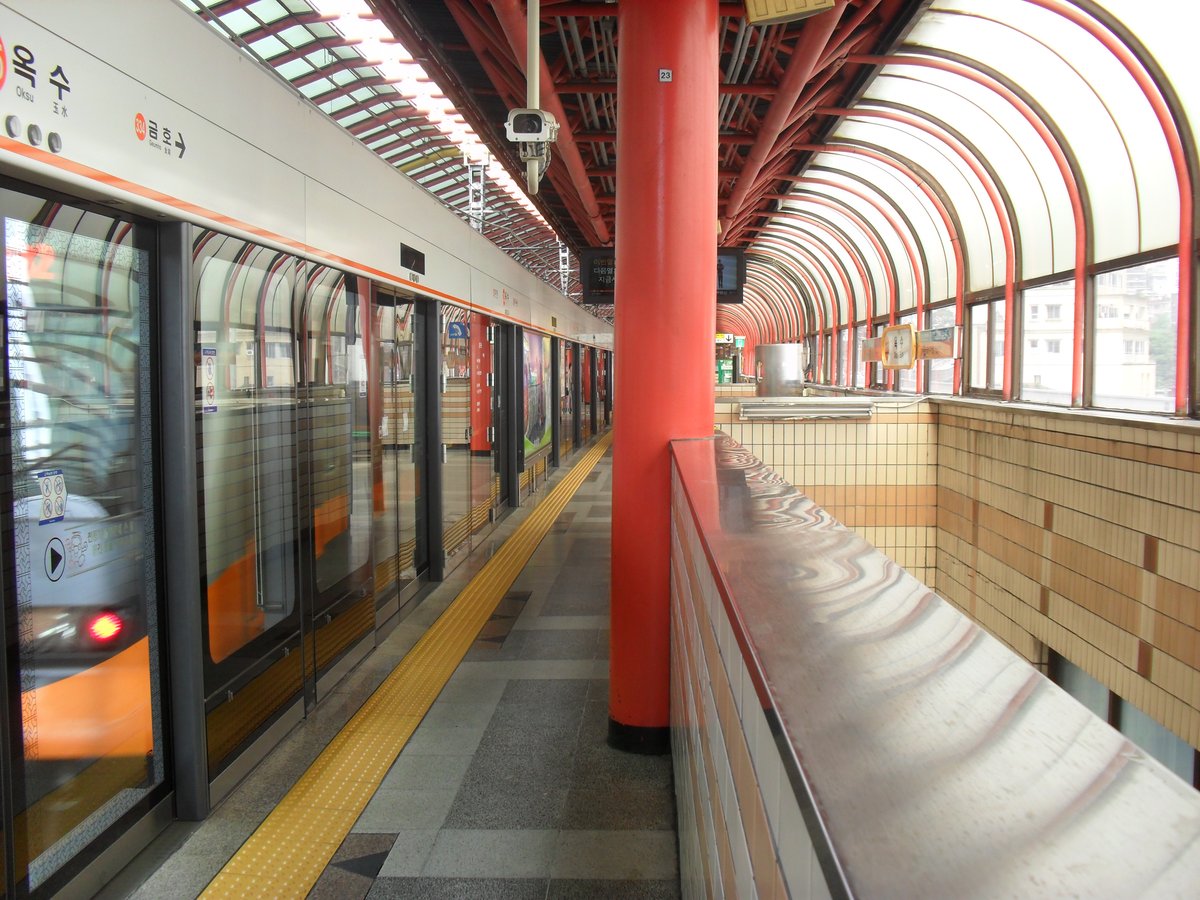
Oksu Station Visiting Hours, Tickets, and Travel Guide | Seoul, South Korea
Date: 14/06/2025
Introduction
Nestled along the north bank of the Han River, Oksu Station is a dynamic interchange in Seoul’s subway system, connecting Line 3 and the Gyeongui–Jungang Line. This modern urban landmark not only serves as a vital transit point for locals and travelers but also acts as a gateway to the city’s evolving history, cultural spaces, and riverside recreation. From panoramic river views and innovative urban parks to vibrant local neighborhoods, Oksu Station encapsulates the blend of past and present that defines Seoul. This comprehensive guide details the station’s history, facilities, accessibility, ticketing, nearby attractions, and practical travel tips for visitors seeking to make the most of this unique destination.
Table of Contents
- Historical Overview of Oksu Station and Surroundings
- Visiting Oksu Station: Practical Information
- Attractions & Activities Near Oksu Station
- Special Events, Folklore & Media
- Frequently Asked Questions (FAQ)
- Practical Visitor Tips
- Conclusion
- References
Historical Overview of Oksu Station and Surroundings
Prehistoric and Ancient Settlement
The area surrounding Oksu Station is steeped in history, with archaeological excavations revealing human settlement in the lower Han River basin dating back 3,000–7,000 years. The emergence of bronze ware around 700 BCE marked a significant period of growth, with riverbanks serving as hubs for early communities. This rich prehistoric context underpins the cultural depth of the region (Wikipedia: History of Seoul).
Dynastic Eras and Han River Significance
During Korea’s dynastic periods, the Han River was a lifeline for trade, defense, and transportation. The north bank, where Oksu Station now sits, was a strategic access point—home to settlements and fortifications that protected the capital through the Three Kingdoms, Unified Silla, and Joseon eras (Wikipedia: History of Seoul).
Colonial and Modern Development
The late 19th and early 20th centuries ushered in modernization, with electricity, trolleys, and railways reshaping Seoul’s landscape. Japanese colonial rule expanded the city’s railway network, setting the stage for post-war development. Rapid growth in the 1960s and 1970s saw the rise of residential and commercial complexes near the river, including the Oksu area (Wikipedia: History of Seoul).
Urban Regeneration and Gentrification
Once overlooked compared to districts like Apgujeong, Oksu has recently experienced robust gentrification. New apartments, independent cafés, trendy stores, and community spaces now define its hilly terrain, reflecting Seoul’s broader efforts to revitalize and integrate diverse neighborhoods (Seoul Sub→urban).
Visiting Oksu Station: Practical Information
Location and How to Get There
Oksu Station is situated in Seongdong-gu, at the boundary of Seongdong and Yongsan districts, directly on the Han River’s north bank. Access is provided via Seoul Subway Line 3 (Station 335) and the Gyeongui–Jungang Line (Station K114), making it easily reachable from across the city (RailMonsters).
- How to Reach: Take Line 3 or the Gyeongui–Jungang Line; the station is within walking distance of Itaewon and Hannam-dong (Mapcarta).
Operating Hours and Ticketing
- Operating Hours: Daily, approximately 5:30 AM – midnight. Check Seoul Metro’s website or app for exact first and last train times.
- Tickets: Purchase single-ride tickets at vending machines or counters; T-money cards are recommended for convenience and can be used on all public transport. Fares start at KRW 1,400 for adults for journeys up to 10 km (CK Travels).
- Refunds: Unused T-money balances can be refunded at most convenience stores, minus a small fee.
Accessibility and Amenities
- Accessibility: Elevators, escalators, ramps, and tactile paving support travelers with disabilities.
- Language Support: Multilingual signage (Korean, English, Chinese, Japanese) throughout the station.
- Amenities: Restrooms (including accessible facilities), convenience stores (GS25, 7-Eleven), bakeries, waiting areas, and information kiosks.
- Wi-Fi & Connectivity: Free Wi-Fi, digital train schedules, and real-time updates available.
- Safety: Platform screen doors, CCTV, and emergency call stations ensure passenger safety.
Attractions & Activities Near Oksu Station
Hangang Riverside Park and Recreation
Oksu Station provides direct access to Hangang Park, a scenic riverside area with shaded paths, murals, cherry blossom motifs, and recreational facilities. Amenities include:
- Benches and Plazas: For relaxation and social gatherings.
- Bike Lanes and Basketball Courts: Ideal for outdoor activities.
- Dongho Bridge: Offers picturesque views of the Han River.
- Jungnang Stream: Adds ecological diversity and historical charm (Seoul Sub→urban).
Cultural Spaces: Darak Oksu
Beneath the elevated platforms, the innovative “Darak Oksu” urban park fosters community engagement and ecological awareness. Features include:
- Vegetation-Covered Roof: Utilizes sunlight-harvesting technology for year-round greenery.
- Children’s Book Café, Event Spaces, and Free Garden: Host lectures, workshops, and community events (Seoul Metropolitan Government, Seoul Metropolitan Government).
Historical and Spiritual Sites
- Prospect Point: Delivers panoramic cityscapes, including views of Seoul Forest, Cheonggye Mountain, and Gwanak Mountain.
- Mata Temple (Mitasa): Accessible from Exit 4, providing spiritual and cultural enrichment.
- Seongsu-dong Neighborhood: Renowned for artisan cafés, creative boutiques, and a vibrant cultural scene (Your Local’s Guide).
Special Events, Folklore & Media
- Seasonal Highlights: Cherry blossom viewing along the Han River in spring; cultural events at Darak Oksu.
- In Popular Culture: Oksu Station has appeared in “Squid Game” Season 2 and inspired the horror film “The Ghost Station,” blending urban legend with social commentary (Hey Roseanne, PopGeeks).
Frequently Asked Questions (FAQ)
Q: What are Oksu Station’s visiting hours?
A: Approximately 5:30 AM to midnight daily.
Q: How do I buy tickets?
A: Use automated kiosks or T-money cards, available at station kiosks and convenience stores.
Q: Is Oksu Station accessible?
A: Yes—elevators, ramps, tactile paving, and accessible restrooms are provided.
Q: Are there guided tours?
A: No formal tours of the station, but Han River Park and Seongsu-dong offer guided experiences.
Q: Can I use T-money cards elsewhere?
A: Yes—on buses, taxis, and some retail shops.
Practical Visitor Tips
- Avoid Rush Hours: Weekdays 7:00–9:00 AM and 5:30–7:30 PM can be busy.
- Plan Exits: Exit 1 leads to the Han River Park; Exit 4 to residential and dining areas.
- Travel Light: Use coin lockers for baggage.
- Use Digital Tools: Apps like Seoul Metro and Naver Maps streamline navigation.
- Respect Local Customs: Queue, keep noise low, and yield priority seats.
- Stay Safe: Follow signage, use platform screen doors, and know emergency contacts (119 for medical, 112 for police).
Conclusion
Oksu Station stands as more than a transportation interchange—it is a living testament to Seoul’s ongoing transformation. Its historical roots, modern amenities, and proximity to cultural and natural attractions provide travelers with a uniquely multifaceted experience. Whether you seek scenic river views, vibrant local culture, or efficient transit, Oksu Station is your gateway to exploring Seoul’s dynamic landscape. Enhance your journey by leveraging digital resources like the Audiala app for real-time transit updates and further travel inspiration.
References
- History of Seoul, Wikipedia
- Oksu Station Overview, Seoul Sub→urban
- Darak Oksu Urban Green Space, Seoul Metropolitan Government
- Oksu Station Details, RailMonsters
- The Ghost Station Film and Cultural Context, PopGeeks
- Urban Regeneration and Darak Oksu, Seoul Metropolitan Government
- Oksu Neighborhood and Attractions, Seoul Selection Magazine
- CK Travels - Seongsu-dong Guide
- Your Local’s Guide to Seongsu-dong
- Hey Roseanne - Squid Game Locations
- Mapcarta - Oksu Station
